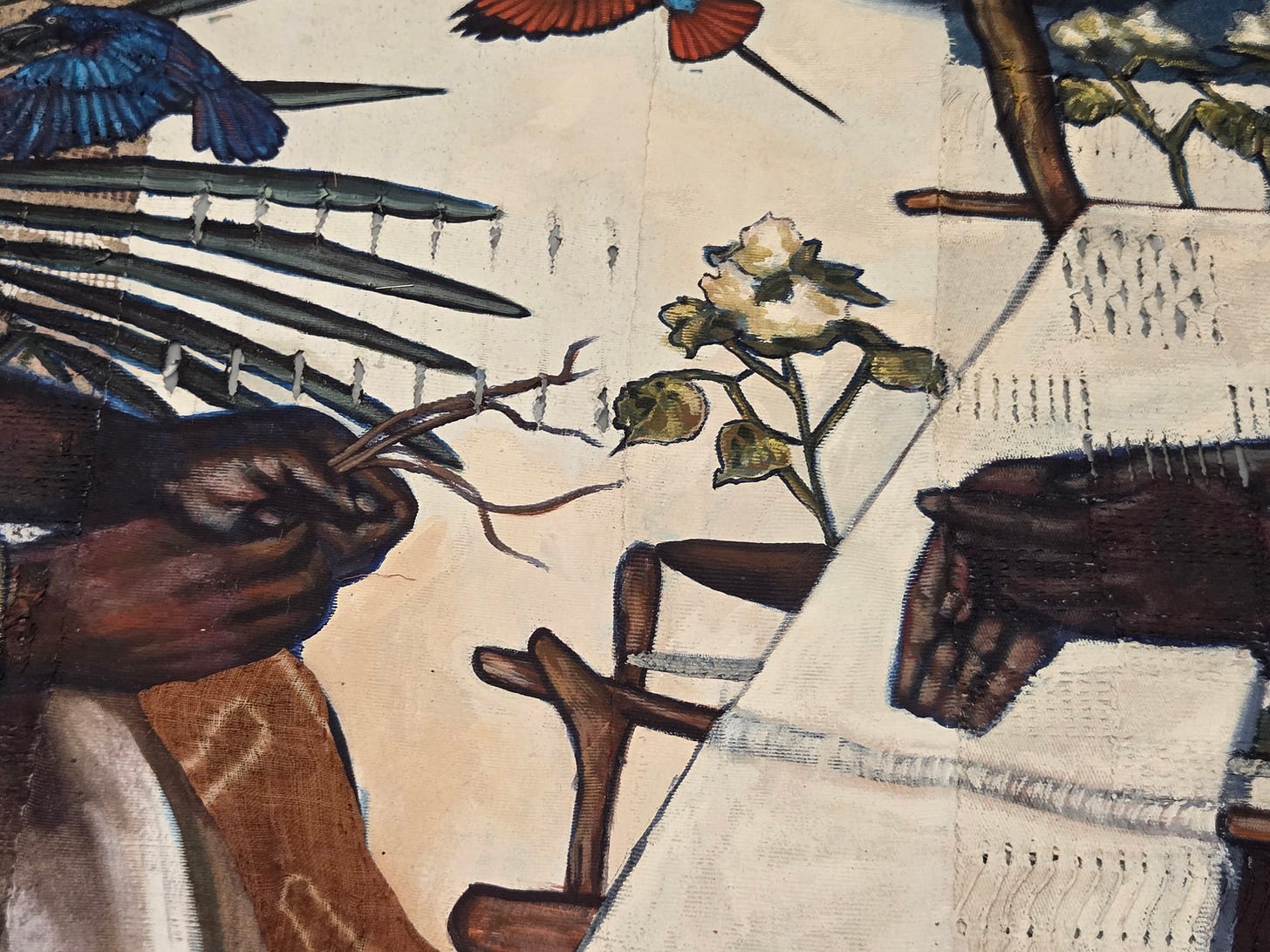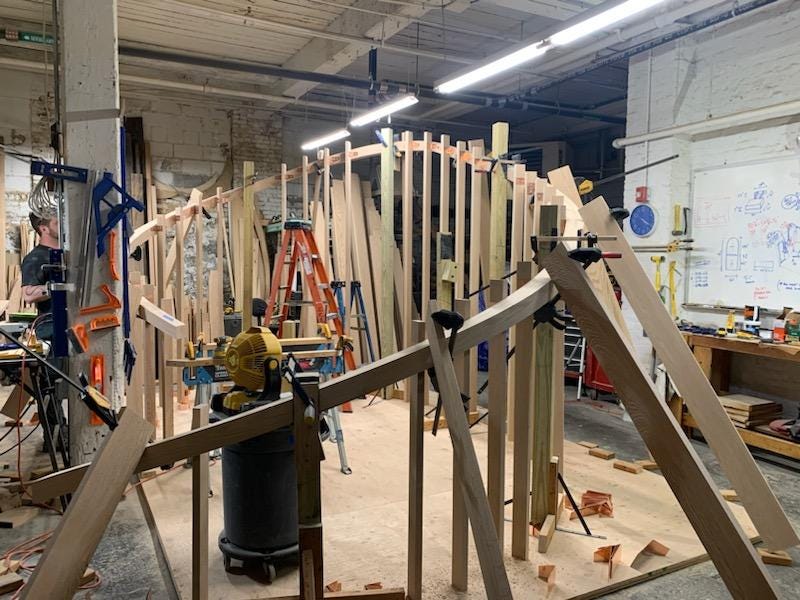Weaving "Spider's Web," building "Joy"
Stephen Hamilton and Alison Croney Moses – two Boston artists featured in the inaugural Boston Public Art Triennial

The Boston Public Art Triennial opens on Thursday, May 22, with 15 installations around the city, bringing Boston’s art world cred up a notch. I had a chance to catch up with two of the local artists featured in the Triennial in the Globe.
Stephen Hamilton’s life changed back in 2015, when he used a grant from Arts Connect International to go to Nigeria and learn to weave. “That was where I learned everything,” he said.
Before that, Stephen was an illustrator. Now, he’s about to unveil a giant, woven Triennial installation at Roxbury Community College. Under the Spider’s Web is a 15-foot-tall painting on hand-woven material, mounted on a hand-carved upright loom. The level of intricacy and handwork, the faithfulness to his sources, is astounding. Stephen hand-dyed the yarn with dyes he made from indigo, red sorghum, henna, and more. He wove passages of the textile using several techniques. Then he painted weavers: A Mossi man from Burkina Faso, a Dida woman from Ivory Coast or Liberia. The installation includes a regular weaving performance, titled Oruko Pe: The Names (Patterns) are Complete.
The weavers he depicts, down to every detail of their garb and jewelry, are from West Africa and West Central Africa, as are the styles of weaving in the textile. Stephen is studying African textiles in his fourth year of a PhD program in African and African American Studies at Harvard. Here, he chose to honor regions where people were once kidnapped as part of the transatlantic slave trade. Those people and their children were, in many ways, robbed of their material culture and the practices that produce it.
“I’m thinking about the Black community as a global Black community,” Stephen said. “What are these things that connect us?” Tracing these threads and weaving them anew, he’s revitalizing ancient DNA of the African diaspora.

Hamilton was one of the first artists in the Triennial’s Public Art Accelerator Program back in 2018, when the organization was known as Now + There. The program is a crash course in the logistics, bureaucracy, and challenges of public art installation.
This year, Alison Croney Moses is one of three Accelerator artists, along with Andy Li and Evelyn Rydz, who will be showing their work in the organization’s Lot Lab in Charlestown. The woodworker usually makes sculptures you could hold in two hands; some are closer to human-sized. For the Triennial, she had to learn to go big – specifically, over eight feet tall and 14 feet wide.
“This thing is ginormous,” she said. Along the way, she learned how to create 3D digital designs; she had to pivot to meet her own vision and to satisfy some of the rules of public art, and she worked with a fabricator for the first time – 4 Nichols in Lowell.
The installation, “This Moment for Joy,” a space for gathering, echoes the swooping, podlike, vessel shape Alison is known for. Since she had her children, now six and eight, the artist has focused on celebrating Black mothers, and urging them to embrace their joy.
“We have to find our joy, we as women, to feel free regardless of what society is doing,” Alison said. “To feel free, we have to lean into our joy so that we actually have balance in our lives.”
I asked Alison and Stephen who they came here to be.
“Someone that makes a difference,” Alison said.
I captured Stephen’s answer on video. “I don’t think the answer is the same at all stages of your life,” he cautioned. Here’s what he had to say.




Beautiful!